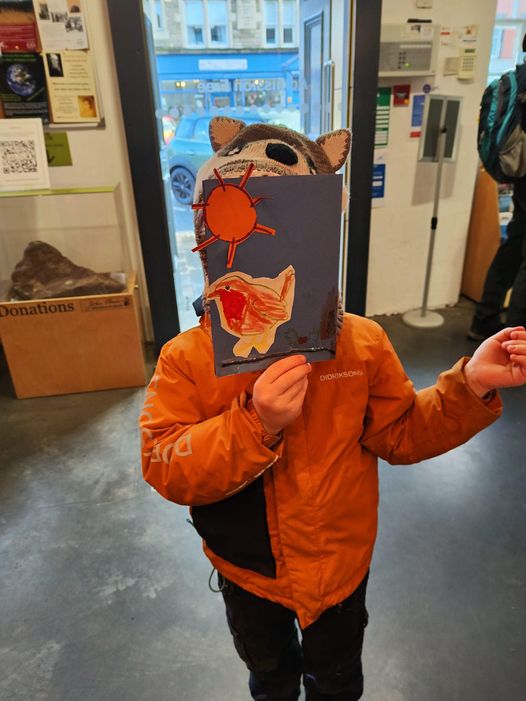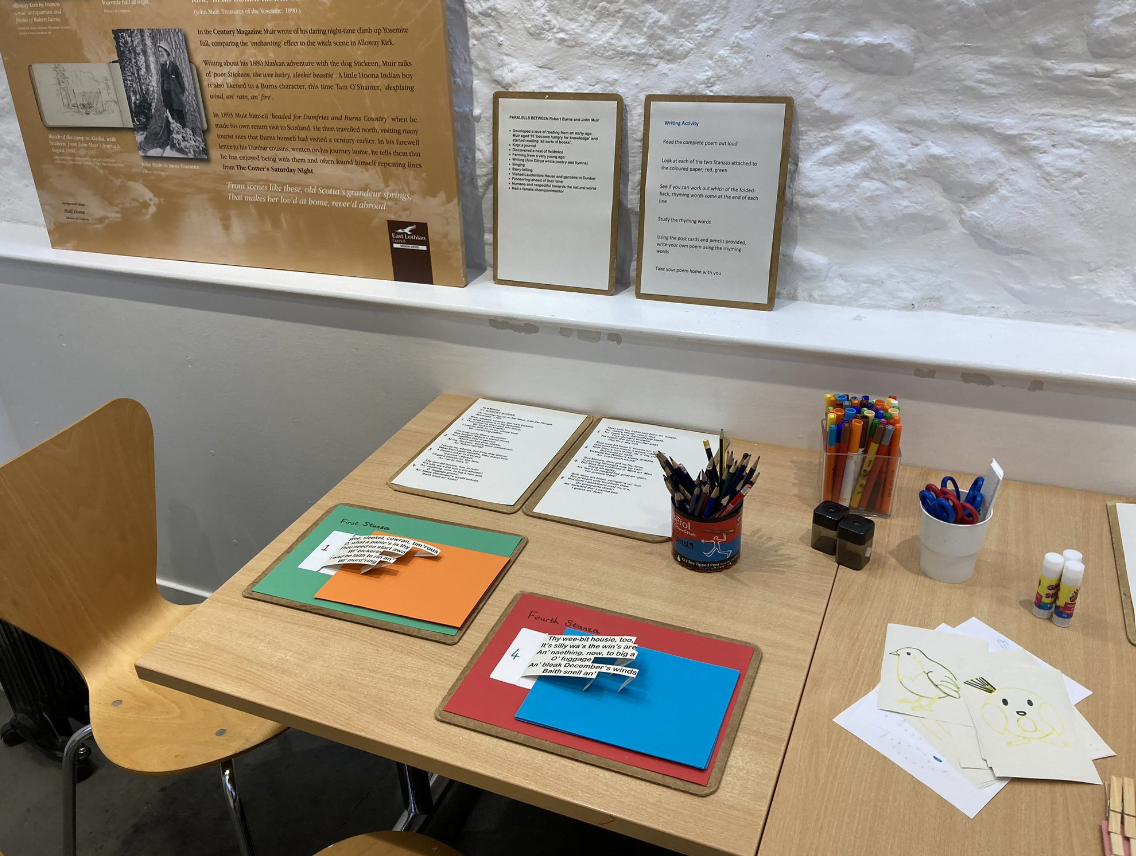
Can you believe it? We opened our doors for the first time on 23rd August 2003 and here we are 20 years later!
We want to say thank you so much to every single visitor who has crossed our threshold over the years, from seasoned John Muir enthusiasts to locals popping in to check our community noticeboard. We wouldn’t be able to open without you.
Our birthday has coincided with some fantastic new research on our Birthplace sampler. Embroidery samplers were often made by young women to mark important events such as leaving school, or to record family births and marriages. We’ve managed to unravel these clues to uncover new information about who stitched our sampler and why. Scroll down to find out about this in more detail and read about what we previously thought here.
We thought our 20th anniversary was a wonderful time to put out a call for embroiderers to produce a replica sampler, keeping in the tradition of samplers being made to mark significant events. Carry on reading below to find out more about why we want to produce a replica.
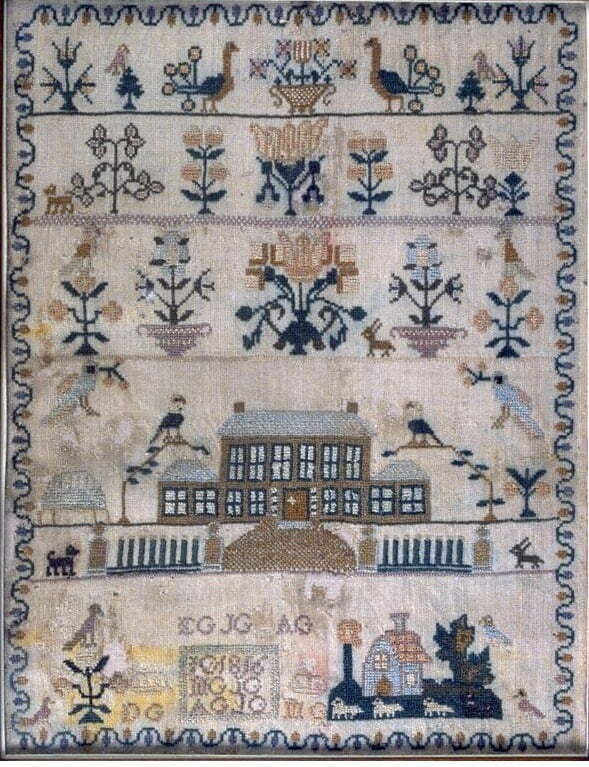
Licensor: University of the Pacific, Muir Hanna Trust.
This sampler is the only item that we have at the Birthplace that connects to John Muir’s childhood in Scotland. It has been on loan from the United States National Park Service collection at John Muir National Historic Site in Martinez, California since the early 1980s. This is because the sampler ended up in the USA with Ann Gilrye Muir, John’s mother. The sampler has the date 1816 in the box at the bottom, so can’t have been made by Ann, as she was only three!
Who was the mystery stitcher?
The initials correspond with birth, death and marriage dates for the family. They also illustrate the sad reality of Victorian life, with only three of the ten children surviving into adulthood because of tuberculosis. This may have been caused by inhaling bacteria released from the carcasses of infected animals at the families butchers shop at 113 High Street, where Lothian Printers is now located.
What do we know?
We think this sampler was stitched by John Muir’s aunt Isabella when she was thirteen years old. Needlework was considered an essential part of a girl’s education. The sampler may have been produced as a form of school leaving certificate to demonstrate the standard of needlework that Isabella had achieved. It would also have coincided with her parent’s 21st wedding anniversary.
Can you help us keep telling this story?
It is vital that we treat delicate old fabrics with care as they are very sensitive to light damage. We have recently had the sampler assessed at the Scottish Conservation Studio and have been advised that it should no longer be on permanent display to minimise ongoing light damage and protect the sampler for the future. We would love to have a replica made so that we can continue to share this amazing story with visitors.
The Scottish Conservation Studio have recommended some conservation work to help preserve the sampler for future generations with an estimated cost of £2,500.
Ideally we would love to have two replica samplers produced – one for display and one as an education resource.
Do you know anyone with the skills to produce a replica? Please let a member of the team know or email museumseast@eastlothian.gov.uk.
You can make a donation to support this exciting project here on our website. You can also donate at the front desk, just speak to a member of the team.
Thank you for your support.
You can learn more about the history of Scottish needlework samplers here on the National Museums Scotland website.
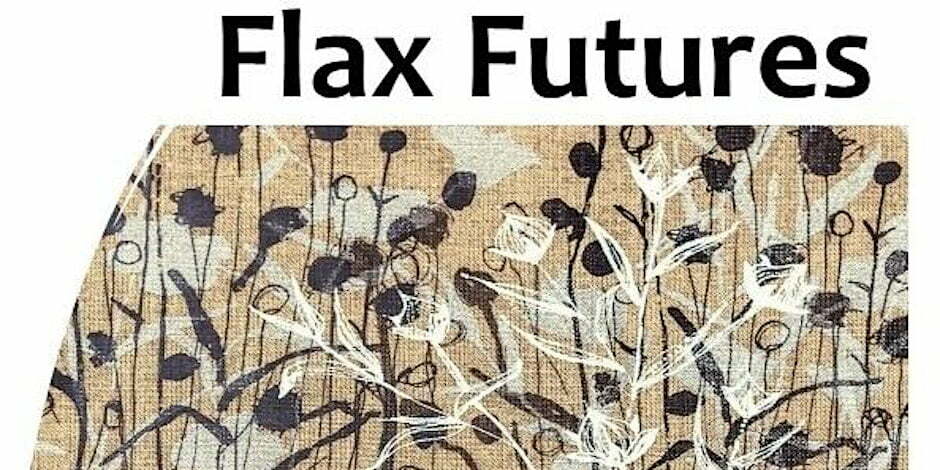
Where does flax and linen meet local resilience and climate change? Find out as Journeys in Design co-design their exhibition and events across East Lothian.
The flax plant, traditionally processed into linen, has been grown for generations in Scotland. Today, flax plays a part in contemporary moves to support local resilience and tackle climate change.
Flax Futures from Journeys in Design, explores this exceptional potential, with new and engaging designs and initiatives on show, from Scotland and beyond.
Their Exhibition and Events focus on future heritage, community resilience, soil health, sustainable textile production and material innovation.
Opening Saturday 5 August, curator John Ennis will offer an introduction to the programme at 11.30am and 2.30pm; the exhibition runs Monday to Saturday 10am – 5pm, Sundays 1-5pm.
Their Walks, Twilight Talk, Flax Chats, and Demos run throughout the programme, evolving with the help of guests from across East Lothian. Dates and times are posted as individual entries on Eventbrite and on their social media @journeysindesign.
We will be hosting this fantastic exhibition from Sara Dodd until the 30th of July. Open from 10am to 5pm Monday to Saturday and 1pm-5pm on Sundays. Admission is free as always.
Sara works with Scottish seaweeds creating original organic pressings and prints that celebrate their intrinsic beauty, colour and light.
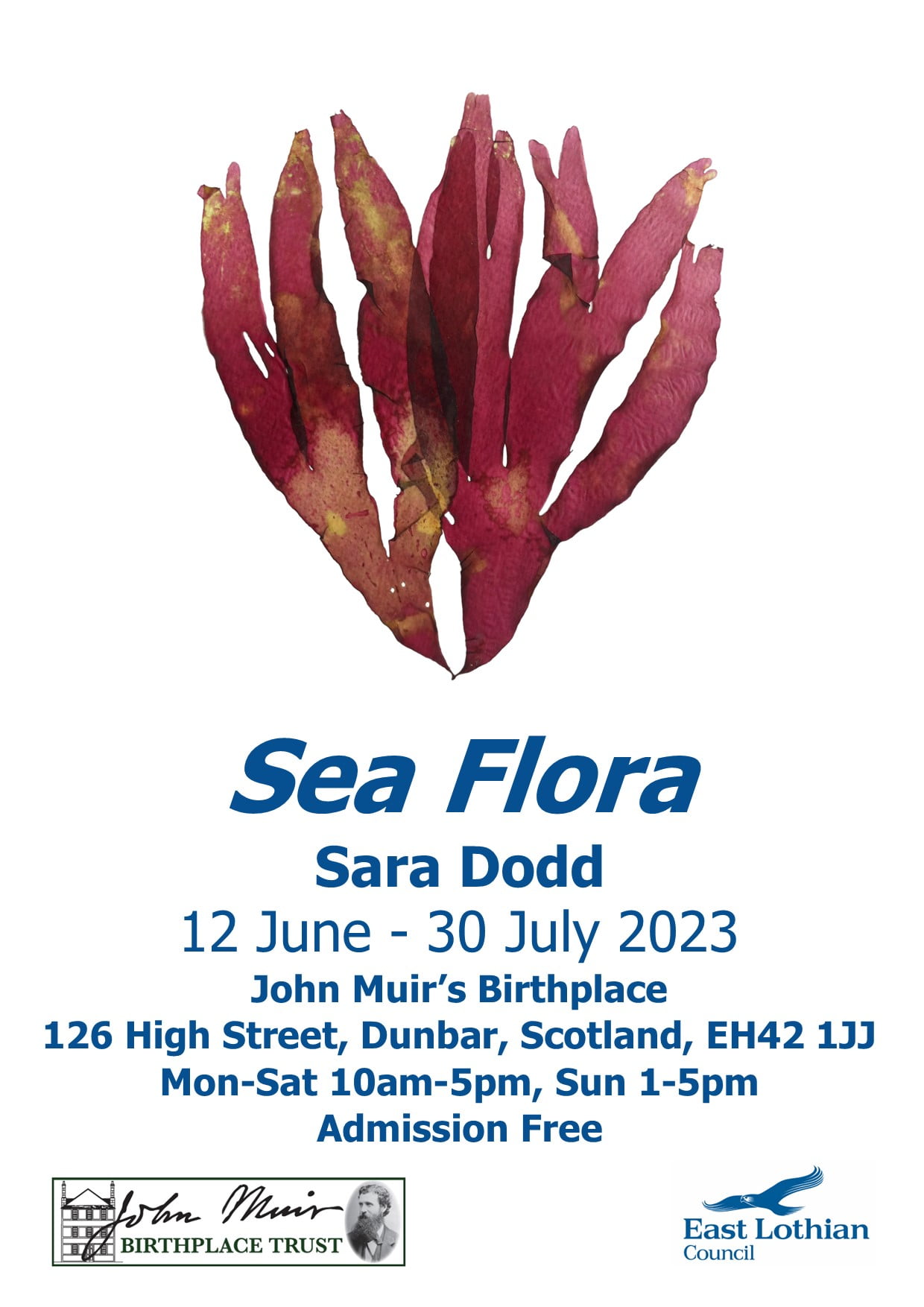
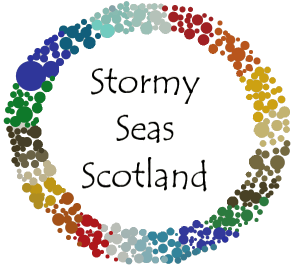
We are delighted to be hosting a pop-up from Kirsty at Stormy Seas Scotland in our shop. Kirsty is a local jewellery maker whose designs are all inspired by her love of the sea and nature surrounding Dunbar. We particularly love that the resin she uses is a by-product of the oil industry. By using it to make jewellery it is kept out of our oceans.
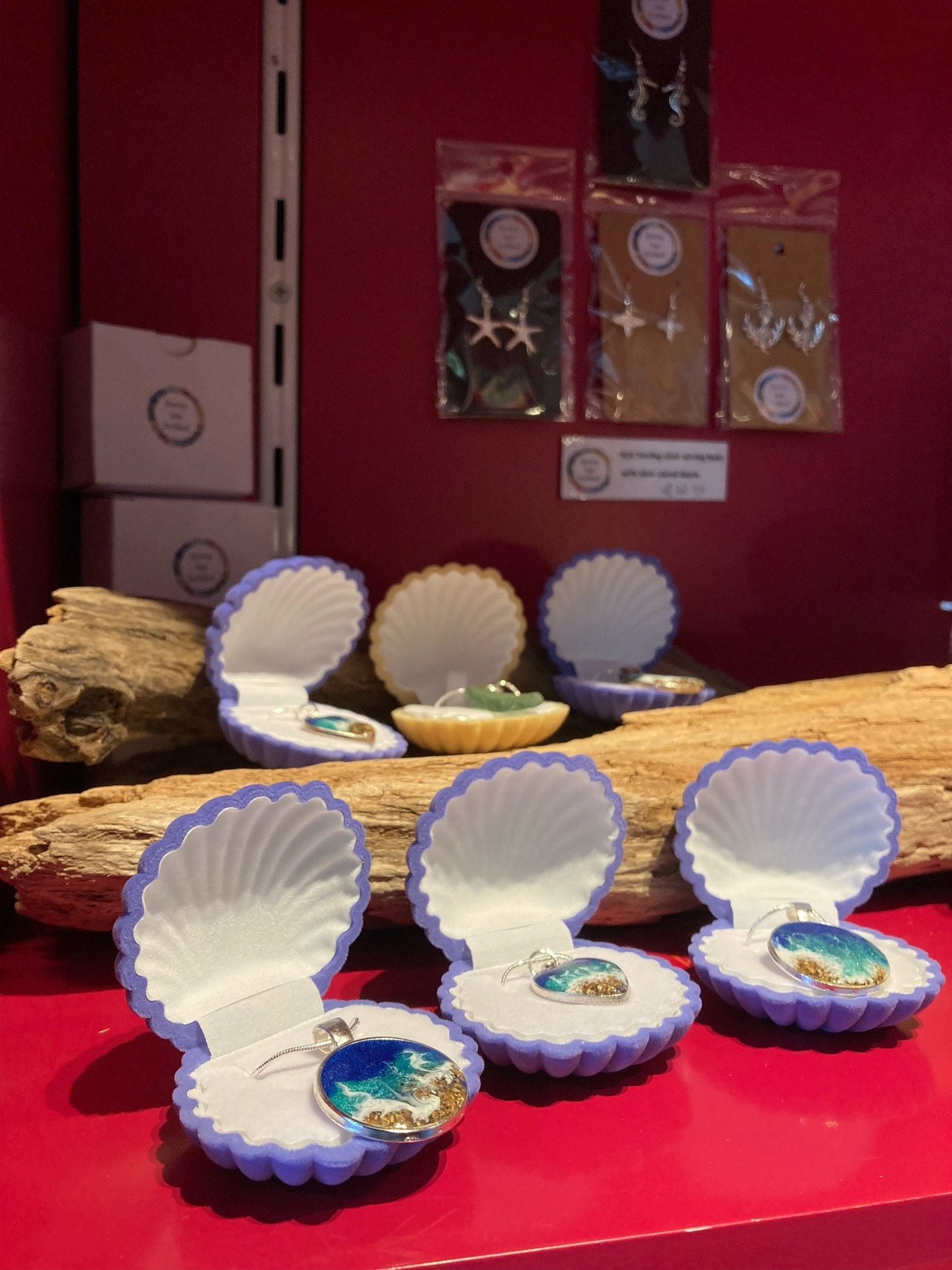
A bit about me…
My name is Kirsty, I live in Dunbar, a small town on the East Coast of Scotland. Growing up in a seaside town I have always had strong bond with the sea. I am passionate about nature and studied wildlife and conservation at University. I love nothing more than taking a walk along the beach, seeing what treasures I can find, as well as picking up the plastics, rubbish and netting choking our seas. I love making things and did jewellery making courses a few years ago. I have been making jewellery for family and friends for years and decided to set up a shop and combine my love of jewellery and the sea.
Sea glass
All of my sea glass products are hand crafted and completely unique using genuine sea glass hand collected around my local town on the South East Coast of Scotland (Dunbar). I love thinking of the story behind the material, how it came to be in the sea and where it has travelled.
Every piece is as unique as you. Even though the glass may have slight imperfections, these are the scars of what it has been through. It is a stamp of their story and I think it makes them more beautiful and intriguing.
Perfected by the waves…
Sea glass comes in a variety of shapes, sizes and colours. It originates from glass which has made it into the sea. Over a number of decades (sometimes even hundreds of years) these pieces of glass have been chemically altered by the salt water and physically tumbled in the waves which results in their smooth frosted appearance. Some of the most rare colours are black, pink, teal, yellow, red, orange and turquoise with purple, citron, cobalt, cornflower blue and aqua being very uncommon, white and bottle green are found the most often.
I love the fact that our seas and oceans recycle broken glass into a beautiful piece of frosted glass which you can wear as a piece of jewellery. Be careful of some advertising sea glass as it is not authentic and has not been produced by the sea.
Resin
All of my resin products are hand crafted and completely unique using high quality resin, inks, pigments and powders which are all vegan, eco-friendly and cruelty free. The resin I use is a by-product of the oil industry, by using it to create beautiful art and jewellery we are saving raw materials from going to landfill.
Products are influenced by the sea or nature.
If you are looking for a particular colour with a particular charm or have any other questions please feel free to contact Kirsty on Etsy, Facebook, or Instagram (@stormyseasscotland).
This is just a quick post to let you know that John Muir’s Birthplace will be closed on Monday 8th May for the Coronation Bank Holiday.
We are grateful to Museums Galleries Scotland for a grant which has allowed us to produce a series of films outlining different aspects of John Muir’s life:
These films were researched and written by John Muir’s Birthplace staff during the lockdown in early 2021. Originally limited to just participating schools, we have decided to make the videos available for everyone to watch. You can access them here.
